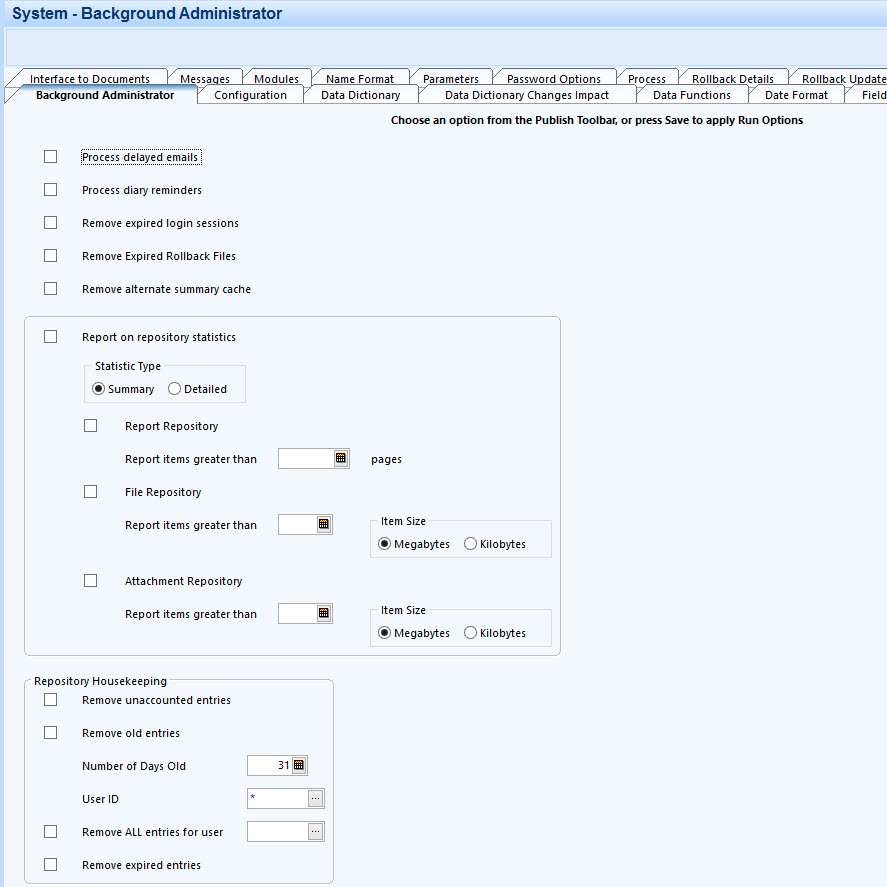Chris21 database management broadly encompasses regular housekeeping and effective archiving procedures. Good housekeeping and archiving practices are essential to ensure your Chris21 database is efficiently maintained.
Ineffective Chris21 database management will result in a database that will grow very large over time. On its own, the size of the database is not a big issue due to the ease of assigning more disk space. After all, the IT department can increase disk space at little cost. The key issues with a database that is growing out of control are:
- Inefficient database related procedures, such as upgrades and backups.
- Increased risk of data corruption as individual files become extremely large.
As mentioned, there are two distinct processes in Chris21 that are used to perform database management tasks; housekeeping and archiving. This blog will focus on housekeeping.
Chris21 Database Management – Housekeeping in Chris21
Effective Chris21 database management should include regular housekeeping. If you are not aware of the housekeeping processes in Chris21 have a look at the Background Administrator (FLM) form. This is where you will find all of the general housekeeping functionality that is available to you.

The Background Administrator form is used to maintain the file repository in Chris21. It does this by removing the expired records that you specify. Hence, it is a very effective process for reducing the size of the files that make up the file repository. This is especially noteworthy because the file repository can grow very quickly if left unattended.
What is the File Repository?
The file repository can be broken down to three specific functions. Each of these functions uses its own file and together these three files make up the file repository. These functions and corresponding files are:
- Report repository. The output will be stored on the file called CHFRD.DAT whenever a Chris21 user runs a report. You may already be familiar with the Report Output feature as this is where you go to retrieve a report when it has completed running. By default the system will store each report for 31 days. With many users running reports this file can very quickly become very large.
- File repository. This is similar to the report output but rather it stores files. They include any files that appear on the Files tab of the Report Output window. This information is stored on the CHFRF.DAT file.
- Attachment repository. Attachments in Chris21 are stored in this file. This information is stored on the CHFRA.DAT file. This file can become very large if you attach many documents in Chris21.
The Chris21 system DAT directory stores these files. Therefore, as the report repository files grow so too does the size of your Chris21 database.
I recommend that you run Chris21 Housekeeping processes on a regular basis. Files that become excessively large run the risk of becoming corrupted. Especially relevant is the impact of a corrupt file on the attachment repository. This is because you may lose access to all of the attachments that you have created.
The most efficient way to manage the file repository is to set your parameters on the Background Administrator and then schedule the process to run on a regular basis. See my blog about Scheduling Reports if you’re not sure how to do this.
Configuring the Background Administrator form

The screenshot above shows an example of the settings you could apply to the Background Administrator process. Furthermore, you can schedule this process to run automatically according to the time and date you select. As a result, the Background Administrator process requires no manual intervention to run.
Please note: To recover disk space you must rebuild the repository files. This is a process that your Chris21 administrator will need to perform. The rebuild process actually deletes the data, thus reducing the size of the repository files. For more information about this see my blog Chris21 Archiving – Don’t Forget This Critical Step.
Review the results of your settings by looking at the size of the CHFRD.DAT file after the Background Administrator process has run. You will see that the file has significantly reduced in size.
Use the Background Administrator (FLM) form to ensure the file repository is kept at a manageable size. As a result of running this process, you will achieve effective Chris21 database management.